 It’s that time of year when we kiss our little ones goodbye in front of that big, yellow school bus armed with new clothes, books, and hopes of higher education. Many parents are thrilled. The teachers have their work cut out for them. 400 years ago, minister and educator, Hezekiah Woodward complained, ‘now the parent doth just nothing, the master must do all, look to the child’s books and manners both.’ (1) Teachers today might argue that not much has changed. Education and manners may start at home, but our teachers are responsible for turning our offspring into model citizens.
It’s that time of year when we kiss our little ones goodbye in front of that big, yellow school bus armed with new clothes, books, and hopes of higher education. Many parents are thrilled. The teachers have their work cut out for them. 400 years ago, minister and educator, Hezekiah Woodward complained, ‘now the parent doth just nothing, the master must do all, look to the child’s books and manners both.’ (1) Teachers today might argue that not much has changed. Education and manners may start at home, but our teachers are responsible for turning our offspring into model citizens.In honor of the teachers that work so hard, here are just a few of history's peculiarities on educating children.

School Supplies
500 years ago, children didn’t trek off to school with piles of books, but they did have their handy hornbooks (shown above). Originating in the 15th century, a hornbook consisted of a wooden or metal paddle with a piece of parchment paper pasted on it demonstrating the alphabet or a lesson. They sometimes had a hole in the handle so they could hang from a child’s belt. It may seem counter-intuitive to arm a child with a learning device that doubles as a weapon-like paddle. Wouldn’t they just start smacking each other over the head during breaks? Probably not. It is a proven fact that Renaissance kids were far more behaved probably because they feared things like eternal damnation instead of being picked last for kick ball.
 D is for Death
D is for DeathPictorial alphabets created by Hans Holbein are a perfect example of how children might be taught their letters. One such pictorial alphabet was the Alphabet of Death where young children could learn their letters in the company of ghouls and skeletons. The message was clear: better learn your alphabet kids because death might be just around the corner. Cheery stuff.
If the death alphabet wasn’t your thing then you might be lucky enough to own a copy of the "The New English tutor...to which is added Milk for Babes" featuring illustrated poems ‘On Judgement’ or 'On Hell'. The book even included extra bonus illustrations of a naked Pope with each of his body parts marked as a vice. These were some of the first info graphics of their day. It’s no wonder that most affluent children were reading by the age of 4.
Discipline: Forget the time outs
Children were not given much credit to behave like little angels because it was believed that most of them were inherently evil.
Erasmus wrote;
“Nature has given small children as a special gift the ability to imitate; but the urge to imitate evil is considerable stronger that the urge to imitate the good.” (2)

The solution to keep them on a godly path was simple. Whack em' silly! In 16th century Cambridge, most schoolmasters would not be caught dead without their hymn book and birch rod. Teachers also had a funny way of warming up for the school year. Often, a poor boy was brought in from the village so that the teacher could beat him to prove that he was ready to handle his real students. Other 16th century forms of punishment included boxing the boy’s ears, forcing them to kneel on sharp wood, or the perennial favorite of wearing a fool’s cap.
Yet although beatings and humiliation were common, many schoolmasters rebelled against the stereotypical monster out of a Dickens novel. Many 16th century scholars believed that gentle admonishing was more effective than the rod. In The Education of young Gentlewomen, the author recommended that discipline be done with, ‘mildness than with vigour’ and further labeled beatings as “beastly.”
The royal whipping boy
But what if you were lucky enough to be royalty? Were you still punished with the rod? In 17th century England, a tutor was never allowed to spank a royal derriere because royalty was anointed by god and therefore could not be touched by mere mortals. Instead tutors had to find a substitute bottom to take the licks. Enter the whipping boy, an occupation long forgotten although the term still survives today. The whipping boy’s main job was to sit next to the royal pupil and take a few thumps every time the royal prince or king screwed up. Close friend and whipping boy, Will Murray got a beat down every time Charles I messed up his lessons. Sometimes whipping boys were even used by grown men. Henry IV’s ambassadors, D’Ossat and Du Perron served as his whipping boys when he adjured his Catholic faith. D’Ossat and Du Perron were forced to kneel before pope Clement VIII and be beaten over the shoulders with a switch in lieu of their king. But don’t feel too bad for the whipping boys because they often landed in cushiony jobs. Will Murray later became the Earl of Dysart. (1) D’Ossat and Du Perron later became cardinals.
So if your kids come home from school today complaining about homework and boring history (gasp!) remind them that at least they don't have to look at naked pictures of the pope all day or wear a fool's cap when they get an answer wrong.
Notes:
(1) Charlton, p. 192
(2) Charlton, p. 101
(3) 'Parishes: Petersham', A History of the County of Surrey: Volume 3 (1911), pp. 525-532.
Sources and Further Reading:
Hornbooks
Charlton, Kenneth. Women, religion and education in early modern England, Routledge, 1999.
Holbein's Alphabet
Robinson, Tony, The Worst Children's Job in History, Macmillian Children's Book, 2004.

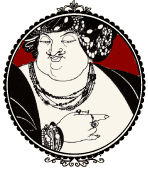

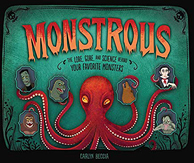
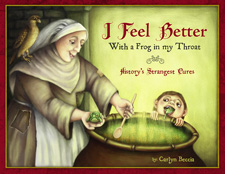
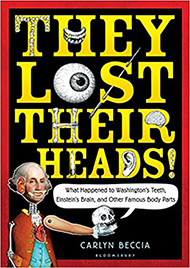


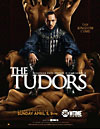

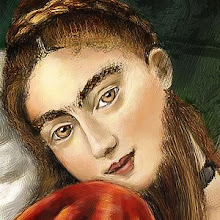
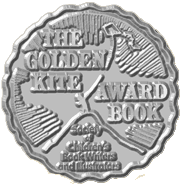
12 comments:
this makes for a fantastic conversational piece with my students- I will definitely link you on my teaching site:)
...and kids today think they have it bad...(maybe your post should be assigned as mandatory reading for first day at school before the kids get to read their regular local school rules!)
I loved this post. I had heard about the whipping boy part - it is so funny - why not just let the royal get away with whatever they were doing - since they don't care if someone else gets whipped.
As usual, wonderful tidbits of history that we don't often come across. Thanks for this.
Hilarious and timely! I wish my pre-K age daughter was old enough to appreciate naked pictures of pope's parts. (But then again, maybe she is...)
Oh WOW, this is a great post & you have the most gorgeous site here. I had to stop by to leave this comment for you – and to say hello of course ! Your posts are creative and original and you have interesting pictures. It's all perfect ! Thank you for sharing your site and best wishes....
The idea was to have a likable lad for the whipping boy. One the king or prince didn't want to cause pain to. Being near a person in physical pain is uncomfortable for most people, anyway. Given earlier times were tougher-minded, still...
I love this post, Carlyn! I've been researching Crown Prince Rudolf of Austria for my third nonfiction title, ROYAL PAINS, and although he may have been spared the rod, he was not spared a crackpot tutor who was fairly abusive. Emperor Franz Joseph was awakened by a noise one wintry night. He went to the window and in the snow-covered courtyard below, there was his six-year-old son's tutor, Count Gondrecourt, drilling the crown prince in military maneuvers!
Leslie, you just gave me an idea for another post – royal kids that got whacked by their tutors and caregivers and how that might have altered their personalities.
I remember Peter the Great ordered much abuse on his son. And the French certainly didn’t believe in having whipping boys. (you probably could come up with much more than me). The whipping boy occupation was just an English occupation (mostly the Stuarts) and didn’t seem to catch on anywhere else? Or at least I don't know of any non-English whipping boys.
Those alphatetic Death pictorials might make a nice comeback today.
AlphaBetic. Jeepers.
I've been reading about the Thirty Years War, evidently Henry IV beat up Louis XIII quite a bit. But that was his dad, not his tutor.
Jane Grey complained that her parents were what we would call physically and verbally abusive, and hypercritical. They demanded that she do everything "ever so perfectly as God made the world". Her tutors, in contrast, gave her kindness and praise, No surprise that Jane was considered "bookish",
entspinster - oh i forgot about Jane Grey....that is a good one. She certainly had it rough as a kid.
Post a Comment